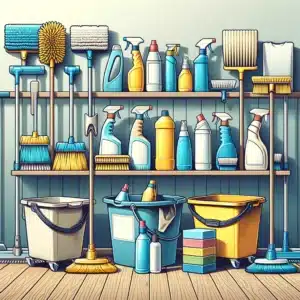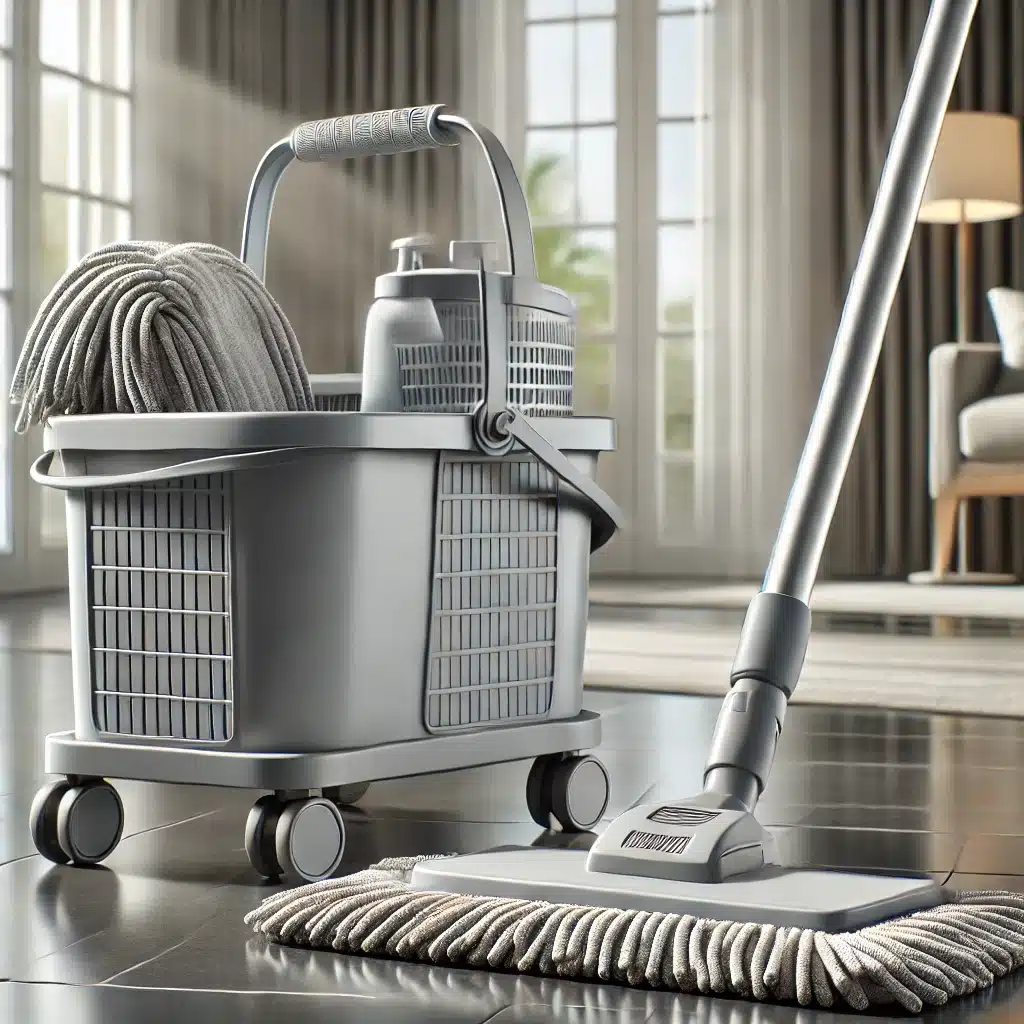Hiring a house cleaners can make your life a lot easier, but how do you ensure you’re picking the right one? Before you entrust someone with the keys to your home, it’s crucial to do your homework. Here are six essential questions to ask potential house cleaners to help you make an informed decision:
1. What Cleaning Services Do You Offer?
When discussing options with potential house cleaners, it’s important to first establish exactly which types of cleaning services they provide. Are you just looking for someone to handle the usual dusting and vacuuming, or are you in need of someone who can dive into more intensive jobs like deep cleaning, move-in or move-out cleaning, and tackling challenging tasks such as oven or window cleaning?
Understanding the full range of services offered by the house cleaners will allow you to assess whether they’re capable of meeting your specific cleaning requirements. For example, if your home needs a thorough overhaul, you might want to opt for a cleaning company that specializes in deep cleaning, ensuring every corner of your space is addressed. This type of service is ideal for those looking for a more detailed cleaning session that goes beyond the surface to target areas often overlooked during routine cleaning.

2. Are You Insured and Bonded?
When hiring house cleaners, it is essential to inquire about their insurance and bonding status. This question isn’t just routine; it’s a critical step in ensuring that both your property and the cleaners are safeguarded in the event of accidents or theft. Insurance and bonding serve as a protection mechanism, offering peace of mind that you won’t be left liable for injuries or damages that might occur during the cleaning process. A reputable cleaning service will readily provide proof of both, reflecting their legitimacy and professionalism.
This transparency is a strong indication of their dedication to client protection and establishes a trust baseline, which is fundamental when you are allowing someone into your personal space. Ensuring that your house cleaners are properly insured and bonded is a non-negotiable aspect of hiring a cleaning service, as it protects you against potential liabilities and underscores the service’s reliability and ethical standards.
3. How Do You Set Your Rates?
Understanding how house cleaners set their rates is crucial for planning your budget and ensuring you receive fair value for the services provided. When discussing costs with potential house cleaners, it’s important to find out what factors influence their pricing structure. Some cleaning services may calculate their fees based on the number of cleaners needed, the square footage of your home, or the total hours they anticipate the job will take. Additionally, different cleaning tasks might be priced differently.
For instance, regular maintenance cleaning might be charged at a flat rate, while more labor-intensive tasks such as deep cleaning or move-out cleaning could be billed at a higher hourly rate. By getting a clear explanation of the pricing strategy, you can better compare the costs and services of different house cleaners to choose one that aligns with your budget and cleaning needs. This information not only helps in making an informed decision but also prevents any surprises when it comes to payment, allowing you to tailor the cleaning services according to your financial comfort and cleaning requirements.
4. Can You Provide References?
Asking house cleaners for references is an important step in verifying their credibility and the quality of their work. Reputable cleaning services should readily provide references or testimonials from past clients. Hearing directly from those who have already utilized their services can offer valuable insights into the cleaners’ efficiency, punctuality, and attention to detail. It also helps gauge the level of satisfaction among previous customers and their willingness to recommend the service to others.
This direct feedback is instrumental in understanding what exactly you can expect in terms of service quality and customer care. Furthermore, it allows you to confirm the cleaners’ professionalism and reliability, which are crucial traits when allowing someone into your home. Checking references ensures that you are hiring house cleaners who are not only skilled at what they do but also trusted and favored by others who have had first-hand experiences with them.
5. What Supplies and Equipment Do You Use?
When selecting house cleaners, it’s crucial to discuss whether they bring their own supplies and equipment. If they do, it’s important to delve deeper into the types of cleaning products they use. This conversation ensures that the supplies align with your personal preferences and health requirements, particularly if you have allergies, pets, or a preference for eco-friendly products. Some cleaning agents contain harsh chemicals that can be detrimental to sensitive groups or have undesirable environmental impacts.
Knowing what products your house cleaners use can help you make an informed decision to ensure the health and safety of everyone in your home. Moreover, if you have specific preferences or sensitivities, you might opt to provide your own supplies. Some cleaning services are flexible in accommodating such requests, allowing you to have greater control over the products used in your space. This not only customizes the cleaning experience to your needs but also fosters a collaborative approach, ensuring that the cleaning process is thorough and considerate of your household’s unique requirements.

6. What Is Your Cancellation Policy?
When arranging services with house cleaners, understanding their cancellation policy is essential due to the unpredictability of life. It’s important to clarify how much notice must be given to cancel or reschedule a cleaning appointment. Knowing this policy in advance can prevent misunderstandings and unexpected charges, which can arise if plans change at the last minute. For instance, some house cleaners may require a 24-hour notice to avoid a cancellation fee, while others might have a more flexible policy.
Additionally, asking about the specifics of any fees involved with rescheduling or cancelling can help you manage your budget more effectively and maintain a good relationship with the service provider. This clarity ensures that both parties have a clear understanding of expectations and procedures, facilitating a smoother interaction and minimizing potential inconveniences for both you and the cleaning service.
7. Do You Conduct Background Checks on Your Employees?
When hiring house cleaners, it’s critical to ensure the safety and security of your home, which starts with understanding who exactly is cleaning your space. Inquiring whether a cleaning service conducts background checks on their employees is a vital step in this process. Such checks are essential not only for verifying the identity of the cleaners but also for confirming their trustworthiness and reliability. This level of scrutiny adds a significant layer of trust and security, providing peace of mind that the individuals entering your home have been thoroughly vetted.
Background checks typically review criminal history, previous employment verification, and other relevant checks that help assess the character and history of the employees. By ensuring that your house cleaners have undergone rigorous background checks, you can feel more secure about your choice of cleaning service, knowing that the team is not only skilled in cleaning but is also composed of individuals who respect and uphold the security and privacy of your living environment.
8. How Do You Handle Special Requests or Areas Requiring Extra Attention?
When hiring house cleaners, it’s critical to ensure the safety and security of your home, which starts with understanding who exactly is cleaning your space. Inquiring whether a cleaning service conducts background checks on their employees is a vital step in this process. Such checks are essential not only for verifying the identity of the cleaners but also for confirming their trustworthiness and reliability. This level of scrutiny adds a significant layer of trust and security, providing peace of mind that the individuals entering your home have been thoroughly vetted.
Background checks typically review criminal history, previous employment verification, and other relevant checks that help assess the character and history of the employees. By ensuring that your house cleaners have undergone rigorous background checks, you can feel more secure about your choice of cleaning service, knowing that the team is not only skilled in cleaning but is also composed of individuals who respect and uphold the security and privacy of your living environment.
Cleaning Hive House Cleaners
Selecting the right house cleaning service extends beyond merely finding individuals who can clean your home efficiently—it’s about ensuring that they are trustworthy, reliable, and that their services can be customized to meet your specific needs. Each of these questions serves as a crucial step in vetting potential services, providing you with the confidence that you’re choosing a cleaning service that not only maintains your home’s cleanliness but also respects and secures your living space. By carefully evaluating each candidate based on these insights, you ensure that the service you choose aligns with your expectations, offering you peace of mind and the joy of a consistently clean home.
For those in the Toronto area, Cleaning Hive emerges as a top recommendation. Known for their professionalism and meticulous attention to detail, they offer a range of services from regular house cleaning to more intensive deep cleans and special situation cleaning such as move-in/move-out services. Cleaning Hive not only adheres to high standards of cleanliness but also places a significant emphasis on customer service, ensuring that their cleaning plans are tailored to fit the unique needs and schedules of their clients. This customization makes them a preferred choice for many homeowners looking for a reliable cleaning partner.
If you’re ready to hire a professional cleaner, check out Cleaning Hive to see how they can meet your cleaning needs. With their comprehensive approach to housekeeping, they stand ready to transform your home into a spotlessly clean and comfortable environment. Should you have any more questions or need further assistance in deciding the right cleaning service for your home, don’t hesitate to reach out to them. With Cleaning Hive, you’re not just hiring a cleaner; you’re ensuring a cleaner, happier home. Happy cleaning!





